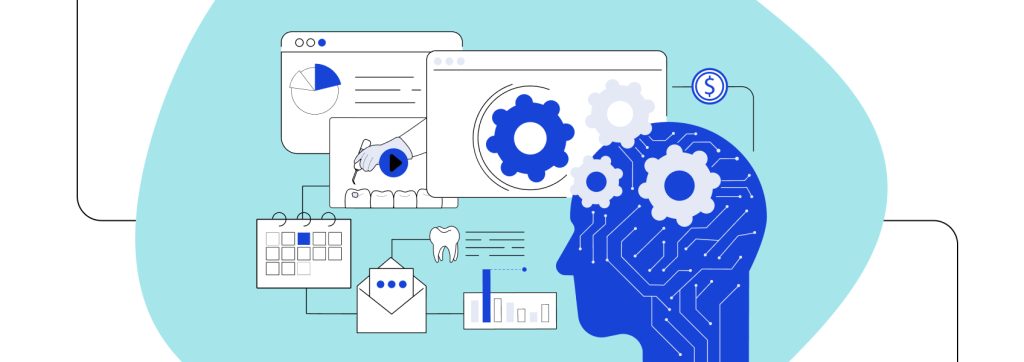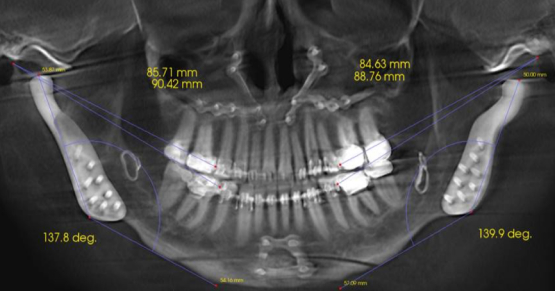How AI Dental Software Is Modernizing Practices
Developments in artificial intelligence have impacted nearly every sector; dentistry is no exception. AI dental software is driving significant changes, reshaping traditional practices, and offering an array of transformative applications. While many practices are excited about the opportunities, there are a few key considerations to keep in mind before adopting this innovative software. Here’s what you need to know about AI’s uses, limitations, and best practices for implementation in dental care.

The power of AI dental software
Most thoughts of AI in dentistry, or any other health care field, center on advanced diagnostics and automated processes. AI dental software can analyze X-rays with remarkable precision, identifying cavities, fractures, and other dental issues that the human eye might miss. This technology can lead to earlier detection and treatment of dental problems, improving patient outcomes. However, that’s not the only thing it can do. There are numerous modern applications of AI in dental offices. Here are a few.
| AI-Guided Scheduling | The software can analyze patient history and clinic schedules to suggest optimal appointment times, reducing wait times and balancing the daily patient load. | Ex. Solutionreach |
| AI-Driven Patient Outreach | AI personalizes communication with patients, sending targeted reminders and follow-ups to nurture stronger relationships and improve patient engagement. | Ex. Lighthouse 360 |
| AI-Enhanced Revenue Cycle Management | AI can automatically generate and submit insurance claims, detect, and correct errors in billing, and track payments. | Ex. CareStack |
| AI-Based Patient Education | AI-powered apps can provide patients with interactive tutorials and customized oral health tips based on their specific needs and conditions. | Ex. Oral-B App |
| AI-Integrated Practice Management Software | Comprehensive software solutions manage patient records, appointment scheduling, billing, and analytics, thereby improving the overall efficiency of the dental practice. | Ex. Spear Practice Solutions |
These are just a few of the ways that AI dental software is helping practices improve patient care. Of course, that’s not to say the tools are without their limitations.
Here are some of the common issues with AI software use in healthcare.
- Data quality and bias: Poor-quality or biased data can lead to inaccurate results and perpetuate unfair or discriminatory outcomes.
- Interpretability: Some AI models are complex and difficult to interpret, making it challenging to understand their decisions and ensure transparency.
- Ethical concerns: AI systems may inadvertently perpetuate or exacerbate existing biases present in the data, leading to unfair or discriminatory outcomes.
- Regulatory compliance: Healthcare AI software must comply with strict regulations, such as HIPAA and GDPR, to protect patient privacy and data security.
- Integration complexity: Integrating AI software into existing health care systems can be complex and may face compatibility and interoperability challenges.
- Robustness and reliability: AI algorithms may not perform reliably under all conditions, requiring continual training and updates to maintain effectiveness.
These are just a few of the problems to keep in mind when implementing these tools in your practice. Luckily, the American Dental Association has been working on guidance to help practices leverage these tools.

ADA guidance on AI use in dental practices
The ADA has provided some guidance regarding the use of AI in dentistry. The American Dental Association SCDI White Paper No. 1106 delves into how practices can use these tools while protecting patient privacy and treatment integrity.
Here are a few tips gathered from this publication:
- Ensure data privacy: Implement robust security measures to protect patient data, adhering to HIPAA regulations and other relevant privacy laws.
- Verify AI reliability: Choose AI tools that have been thoroughly assessed and validated to ensure their accuracy and reliability in clinical settings.
- Maintain human oversight: Use AI as a supplementary tool, ensuring that dental professionals retain final decision-making authority to maintain treatment integrity.
- Continuous training: Keep up to date with ongoing training and education on AI technologies to fully leverage their capabilities while understanding their limitations.
- Patient consent: Clearly communicate with patients about the use of AI in their treatment and obtain their consent before implementing these technologies.
Practices that use AI tools should continue to monitor updates, as laws and regulations regarding their use are still being developed. Staying informed will help ensure compliance and optimal use of the technology. It will also help practice managers choose the right solutions.
Choosing the right AI software for your dental practice
When selecting AI dental software, one crucial factor to consider is comprehensiveness. The ideal software should integrate multiple AI capabilities into a single solution. This includes features such as AI-guided scheduling, patient outreach, treatment planning, revenue cycle management, patient education, virtual consultations, and practice management. By selecting comprehensive software, dental practices can streamline their operations, improve patient care, and enhance overall efficiency. An all-in-one solution reduces the need for multiple software applications, ensuring seamless integration and easier management.
Another key aspect to look for in AI dental software is the level of support provided by the vendor. Adequate support should include consultations and training on how to leverage the software to grow and improve the practice. This can involve personalized guidance on optimizing workflows, maximizing the software’s features, and implementing best practices. Strong vendor support helps dental practices fully realize the benefits of AI technology and achieve sustainable growth.
By embracing AI dental software and adopting a proactive approach to responsible integration, practices can unlock new opportunities for efficiency, effectiveness, and innovation. This not only enhances staff satisfaction but also leads to improved patient care by streamlining processes, enabling personalized treatment plans, and facilitating better communication with patients.
VIRTUAL SEMINARS
The Campus CE Experience
– Online, Anywhere
Spear Virtual Seminars give you versatility to refine your clinical skills following the same lessons that you would at the Spear Campus in Scottsdale — but from anywhere, as a safe online alternative to large-attendance campus events. Ask an advisor how your practice can take advantage of this new CE option.

By: Spear Team
Date: October 1, 2024
Featured Digest articles
Insights and advice from Spear Faculty and industry experts


